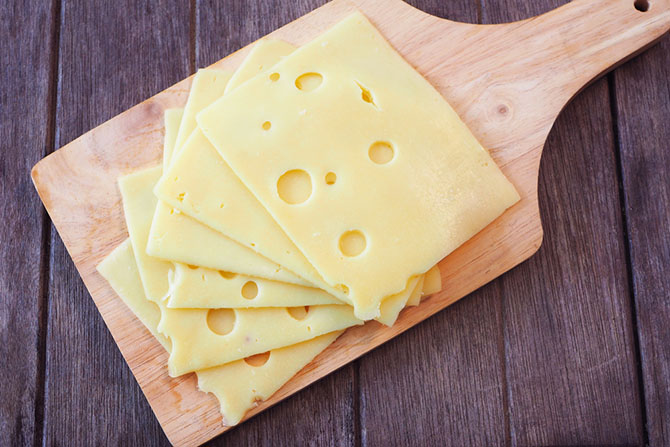Table Of Contents
Cheese has been subject to various misconceptions and myths surrounding its health benefits and potential drawbacks for years. However, a closer look into the world of cheese reveals that it’s delicious and packed with nutrients essential for our well-being.
Gayo Azul has recently launched its Third Annual Gayo Azul Blue Rooster Chicken Coop Giveaway in April to honor the spirit of community and cheese appreciation. This inventive giveaway ingeniously merges Easter and egg hunts has garnered significant excitement from countless eager participants. As we delve into the intriguing realm of cheese and its effects on our well-being, we find ourselves inspired by Gayo Azul’s original approach to uniting people over their mutual passion for this classic dairy indulgence.
From its rich calcium content to its surprising role in weight management, there’s more to cheese than meets the eye – or should we say palate? So let’s dive in and explore the wonderful world of cheese and its many health benefits!
Dispelling Common Cheese Misconceptions
When it comes to cheese, many misconceptions are floating around, often preventing people from enjoying this delicious and nutritious food.
One of the most known myths is that cheese is addictive. While it’s true that some people may crave cheesy dishes, there isn’t any scientific evidence to support the idea of cheese addiction. In fact, studies have shown that when people crave a certain food or dish, it’s usually due to the combination of flavors and textures rather than just one specific ingredient.
Another widespread myth is that dairy-free alternatives are always healthier than traditional cheeses. While some individuals may choose dairy-free options due to allergies or intolerances, it doesn’t necessarily make them a healthier option for everyone.
Dairy-free cheeses are often made from nuts or soy and can be highly processed with added oils and preservatives. On the other hand, traditional cheeses made from cow’s milk contain essential nutrients such as calcium, protein, and vitamins A and B12. It’s really important to remember that moderation is key when consuming any type of cheese – whether it’s dairy-based or not.
As we continue breaking down these myths surrounding cheese, we can better appreciate its nutritional value and include it in a balanced diet without fear or guilt.
Nutrient Profile Of Different Cheeses
Imagine this: a cheese platter filled with a diverse array of flavors, textures, and colors, each type offering its own unique nutrient profile. When it comes to cheese antioxidants and calcium content, there’s more than meets the eye.
In this section, we’ll explore the distinct nutritional benefits of various kinds of cheese, unveiling the hidden gems within our favorite dairy delights.
Aged cheeses such as cheddar, Gouda, provolone, and Swiss are known for their rich flavors and firm textures. These matured varieties boast impressive levels of calcium content, essential for maintaining strong bones and teeth. Additionally, they contain higher amounts of vitamin K2 compared to softer cheeses – a nutrient that helps regulate calcium in the body and may reduce the risk of heart disease. Another surprising find is that aged cheeses have trace amounts of cheese antioxidants like glutathione which can help protect all cells from damage caused by free radicals.
Embrace the creaminess of soft cheeses like Brie, Camembert, or blue cheese as they also offer their own nutritional advantages. While they may not have as much calcium as their aged counterparts due to their high moisture content, they still contribute positively to your daily intake. Soft cheeses are often rich in probiotics – those friendly bacteria that support a healthy gut and immune system.
Cheese’s Role In Weight Management
Having explored the nutrient profile of various kinds of cheese, it’s important to consider how incorporating cheese into our diets can impact weight management.
Many people often associate cheese with weight gain due to its fat content; however, consuming it in moderation can play a beneficial role in maintaining a healthy weight.
Cheese cravings are not uncommon, and indulging in this dairy delight can be satisfying without derailing one’s weight management goals.
The key is portion control – choosing sensible servings of cheese can help prevent excessive calorie intake while still providing valuable nutrients such as protein, calcium, and phosphorous.
For instance, a small serving of a flavorful cheese like blue or feta can add taste and texture to salads, omelets, or even a simple snack.
This can help curb hunger and make it easier to maintain a balanced diet.
The nutritional benefits of cheese should not be overlooked when striving for weight management success.
By making mindful choices that prioritize portion control and variety, individuals can enjoy their favorite cheeses’ rich flavors and textures without compromising their health goals.
So go ahead and savor that slice of cheddar or sprinkle some parmesan on your pasta – just remember, everything is in moderation!
Lactose Intolerance And Cheese Consumption
Lactose intolerance is a common digestive issue that affects many individuals worldwide. It occurs when the body cannot properly break down lactose, a famous sugar found in milk and other dairy products. Symptoms of lactose intolerance are bloating, gas, stomach cramps, and diarrhea.
Despite these uncomfortable symptoms, cheese lovers need not despair; several options are available for those who want to continue enjoying cheese while managing their lactose intolerance.
Lactose levels in various pieces of cheese can vary widely depending on factors such as age and the fermentation process. For example, aged cheeses like cheddar, Swiss, Parmesan, and Gouda typically have lower lactose levels because lactose breaks down during aging. Additionally, certain types of cheese-making processes involve bacteria or enzymes that help break down lactose even further. As a result, these cheeses may be more tolerable for people with lactose intolerance. It’s essential to read labels carefully and consult with a healthcare professional before consuming any dairy product if you have concerns about your tolerance.
Plenty of intolerant alternatives are available for those who cannot consume traditional dairy-based cheeses due to their sensitivity to lactose. Dairy-free cheeses made from nuts, soy, or other plant-based ingredients provide an option for those seeking a cheesy flavor without the digestive discomfort associated with traditional dairy products. Some of these alternatives closely mimic the taste and texture of real cheese while offering additional health benefits such as being cholesterol-free or providing extra nutrients like protein or fiber from their plant-based sources. The key is to experiment and find which alternative works best for your individual needs and preferences so you can continue enjoying cheese without sacrificing your health or comfort.






